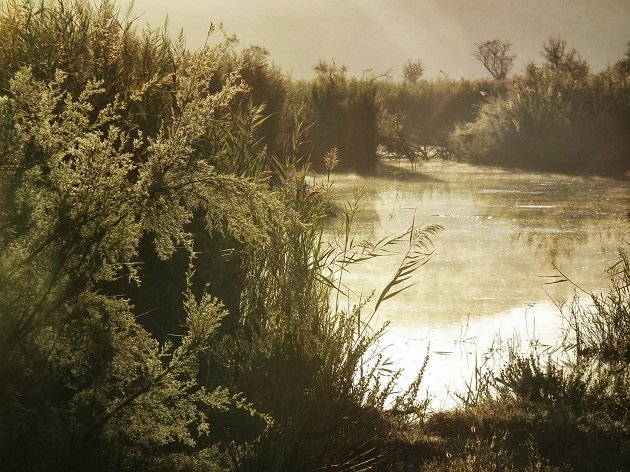
We tried yesterday to visit the Nekromanteio of Afyra, the very entrance of ancient Greek’s Hades, but the world of the dead was locked up (well, not really for renovation, but for further research and digging at this archeological site). Still, it is somehow reassuring to know that Hell is closed (one Albanian proverb says that there are no keys for the Hell’s Gates – they are open to all).
And here I am now, avoiding the two barking dogs trying to bite my tires while I am driving through pre-dawn darkness towards the delta of the river Styx, or Acheron, as it is known today at the Ionian Sea coast of Greece. Marshes are the habitats with the greatest species richness in moderate zones, also significant as breeding, wintering and migratory stopover sites for birds; it therefore comes as no surprise that this one is among the 10,000 Important Bird Areas of the World (one per each bird species?).
The Acheron Delta lies some 30 minutes to the south of the Parga tourist resort and a mile downriver from Nekromanteio; its entrance being the small resort of Ammoudia. On a wire by the road, one European Bee-eater awaits me. These birds have already left my native Serbia, further north, and this is not just the only one I have seen in Greece, but my last bee-eater of the season. Soon I leave tarmac behind and enter the dirt track of the delta proper.
By now, the Sun is above the horizon – but not yet above the hills behind the marshes. I drive as slowly as possible – any slower and the engine would stop. The first Little Egrets and Grey Herons in flight above the misty delta. This is possibly the only European wetland I’ve birded where Common Moorhens outnumber Eurasian Coots. In Serbia, there would be a few dozen or hundreds of coots and, at the same time, from a few up to a dozen moorhens, but here they are even-numbered, with a few more moorhens (mostly young).
| Tachybaptus ruficollis | Little Grebe |
A few Little Grebes and one Common Greenshank further, I encounter two Squacco Herons and reach for a camera, without success: there is no direct sunlight, and the telephoto lens likes a lot of light. Movement behind the herons and I scan the reeds with my binoculars to find another young moorhen, but through the binocs I notice another movement deeper in the reeds, the smallest and – in my opinion – the most beautiful heron of the region, Little Bittern. Now I am already sorry there is no sunlight for a photo.
Finally, the rising sun is thinning the mist, giving some colours to the scene, and the first Barn Swallows appear low above the water, drinking in flight, sometimes plunging their bellies and having a morning bath, before they rest in a bush preening their feathers (at the same time, my FB friends were lamenting how these birds have already left Serbia).
I can hear the mooing of cows, interrupted by gunshots, while two scared flocks of ducks fly above the delta. High ’tsi-tsi-tsi’ and one turquoise Common Kingfisher flies by. A Muskrat (Ondatra zibethica) shadowed by the reeds, while one female Bearded Tit (without beard, fortunately) disappears among the reed seed-heads.
The cows, let free to walk to the nearest wet meadows, are coming in my direction. I park by the side of the dyke, leaving them as much space on one side as possible, but they pass by on both sides. The first one to reach me is one calf, confused by the unexpected sight, so it lets its mother take the lead. Among them, I recognize a large-headed bull (or was it an ox? I wasn’t checking that low), but he, too, passes calmly.
Back to Ammoudia to reach the second dyke. Electric wires at both sides of the street are filled by both Barn and Red-rumped Swallows. The dyke gate is open and I squeeze in – this dyke should take me to the heart of the delta. Or of the one fourth of it still surviving the decades of draining and turning marshes into arable land. I can still hear the gunshots and hope that the hunters really do shoot only the flying birds.
One unusually dark female Eurasian Marsh Harrier, Black-crowned Night Heron, Eurasian Jay… I can hear the Common Raven from somewhere above. Tiny bird disappearing into the thicket, then showing on a branch – Willow Warbler. I veer into the very heart of the delta… and find myself in the Rubbish Alley, an illegal dumping site where people of Ammoudia leave old bricks and ceramic tiles, plastic chairs and toys, toilet seats, cut palm tree trunks and a lot more. From their point of view, I suppose, they are putting those marshes to a good use (to be completely honest – pretty much like birding Serbia).
| Saxicola rubetra | Whinchat |
Around me is a wet meadow used by the cows whose path I dared to cross. There is a Whinchat on a low stem and a bit further a Northern Wheatear, too. By the tire tracks in the grass, one smallish bird runs in comically shorts strides – Little Ringed Plover. To complete this pastureland idyll, there is a Red-backed Shrike on a nearby tree.
| Oenanthe oenanthe | Northern Wheatear |
By now, I use the same dyke to return to the town to reach the next one; but now there is a hunter standing at every hundred meters. I drive by, wave my greetings, some of them wave back.
A short tarmac section and a new dirt track, this time the one bordering the marshes on one side and the maize fields on the other side. In a low tree crown above the road stands an Icterine Warbler, while a smaller flock of Sand Martins hunts insects low above the reeds.
There’s a pickup truck parked by the dirt road, next to it stands a bored hunter. A guy on a motorbike is approaching me… perhaps a leader of the hunt to warn me off the area for safety reasons? I wave my greeting; he waves back and passes on.
Still, there is no point in going any further. On a previous dyke, there were six hunters, all looking in this direction, and here I can see the first in a line looking towards the previous dyke. There cannot possibly be any birds left at the canal by the road.
I give up. Three European Turtle Doves wave their goodbyes from a roadside wire and, a bit further along the road, one Short-toed Snake Eagle is devouring a snake in mid-air.
| Circaetus gallicus | Short-toed Snake-eagle |
On hardships of being a travelling naturalist:
Complete bird list available at eBird.

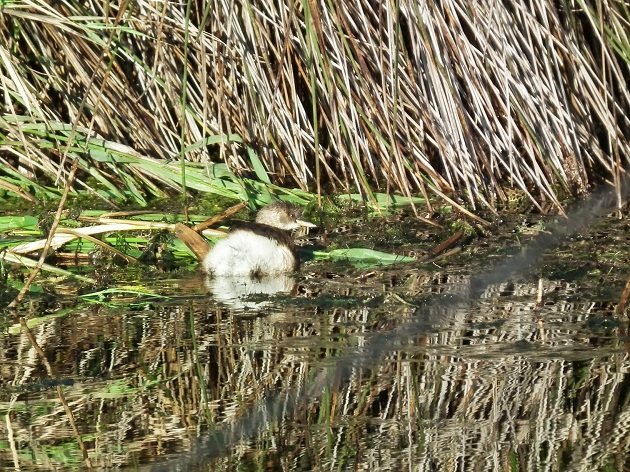
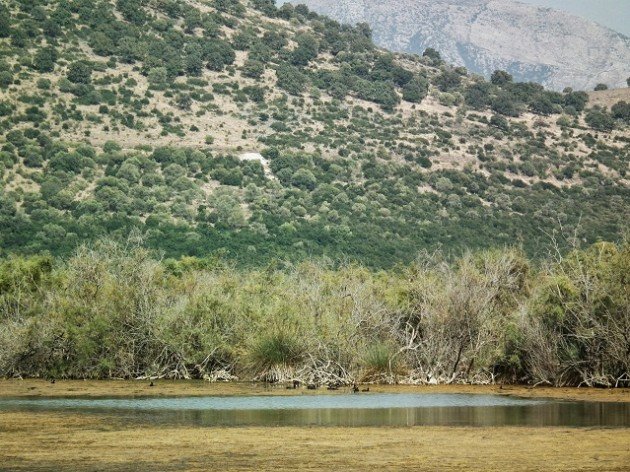
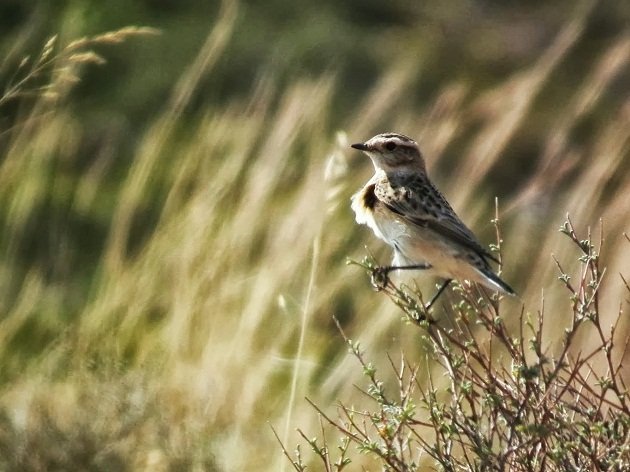
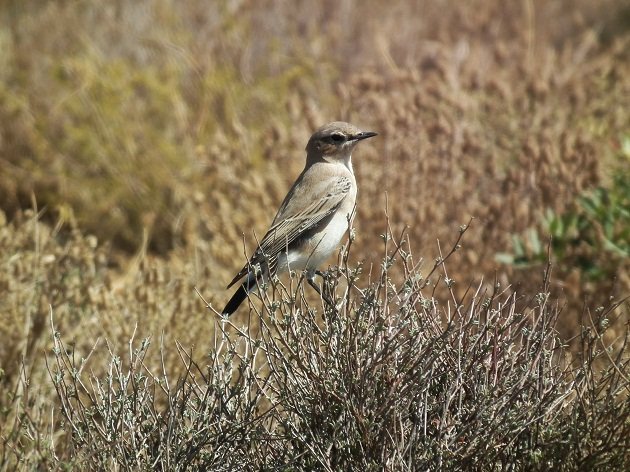
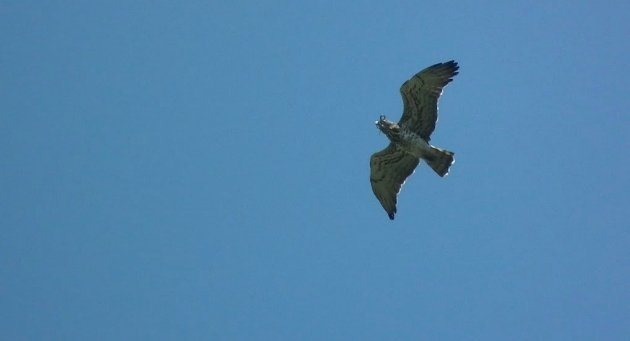
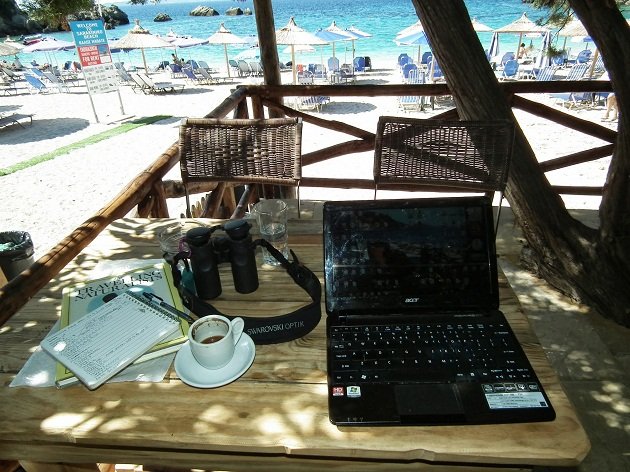










Leave a Comment